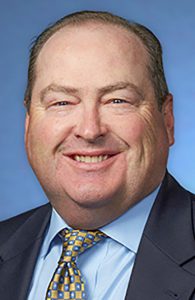
By Christopher K. Kelly
Small business owners in New York face many decisions each day. Being part of a community bank, it’s not uncommon for us to be involved in conversations on how to best attract, retain, and take care of employees in terms of compensation, health benefits, vacation, and retirement. This last item, retirement and financial security, is an increasingly common topic of interest. In our discussions with workers in New York, most understand there is a need for them to be saving for retirement. They know that people are living longer (meaning income will be needed for a longer period of time), Social Security benefits will not meet their income needs, and health insurance in retirement will be a significant expense. These conversations often lead to two questions: (1) Does the employer offer a retirement plan and (2) Does the employee have the capacity to make saving for retirement a priority in their budget?
Over the past several years, there has been an increased effort at the state and federal levels to help small businesses provide their employees access to a retirement savings plan. Small business owners have a variety of retirement plans to choose from, including: 401(k), 403(b), Profit Sharing, Pension Plans, SIMPLE IRAs, and SEPs. Each of these programs offers its own set of features, requirements, varying complexity, and administrative costs. Knowing which type of retirement plan to implement is not an easy task, and often leads to no selection at all. The result is that many workers in New York are still not covered by an employer-sponsored retirement plan.
In an effort to give more employees access to a retirement plan, many state governments have developed their own programs. While these retirement programs differ by state, the common features include: mandates for businesses to participate based the number of employees, automatic enrollment for employees to save 3 to 5 percent of their pay into a Roth IRA, the ability for an employee to opt-out of saving, designated investment options, and low administrative fees.








